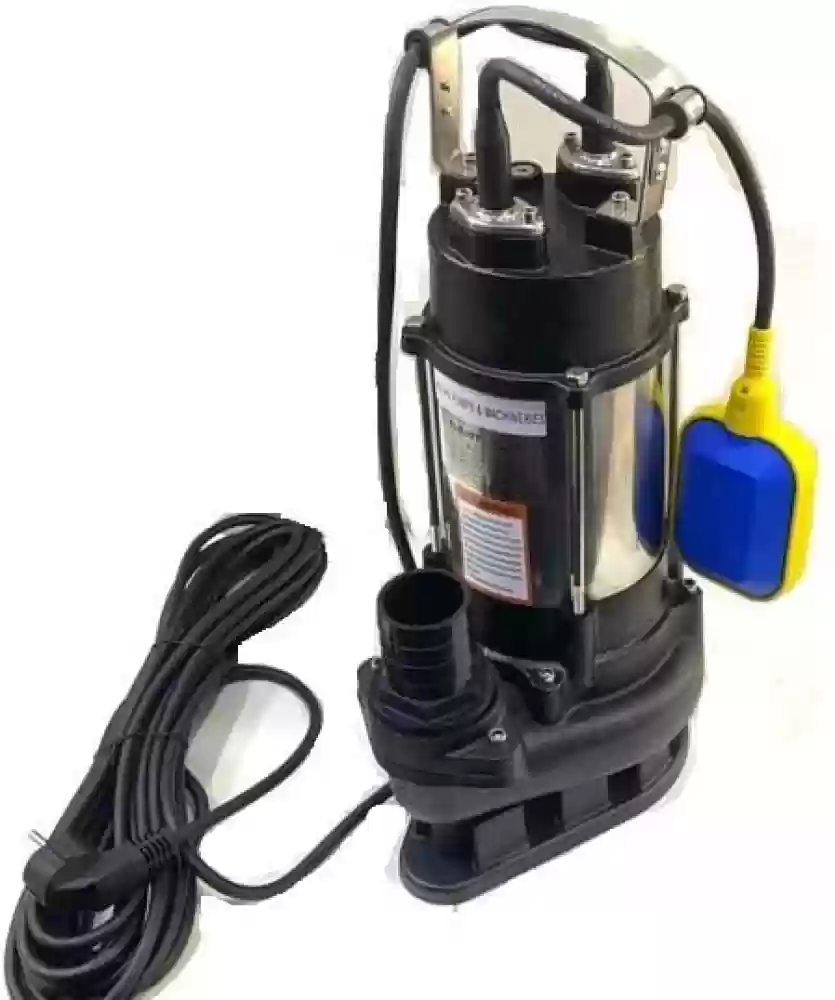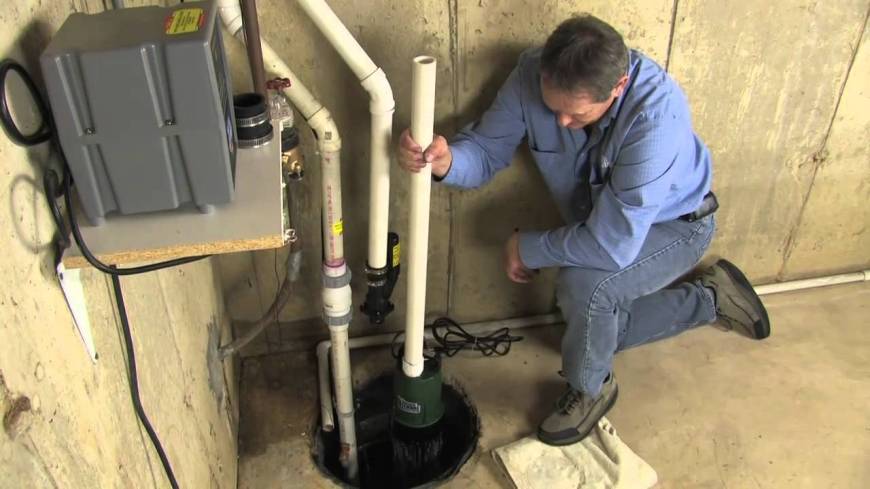Fast Steps to Cleaning Your Sump Pump
Fast Steps to Cleaning Your Sump Pump
Blog Article
The content further down about How To Effectively Clean A Sump Pump is incredibly entertaining. Don't skip it.

Sump pumps are critical elements in several homes, particularly in areas susceptible to flooding or too much moisture. They assist stop water damage by effectively eliminating excess water from basements or crawl spaces. However, like any other appliance, sump pumps call for normal maintenance to guarantee they function properly when needed the most. Cleansing your sump pump is an important part of its maintenance, and comprehending exactly how to do it appropriately can save you from costly fixings and potential catastrophes.
Intro
Keeping a tidy sump pump is essential for its proper functioning and longevity. Overlooking this crucial job can result in obstructions, breakdowns, and ultimately, water damage to your building. As a result, finding out just how to clean up a sump pump is critical for house owners that depend on these tools to maintain their basements completely dry and protected.
Understanding the Sump Pump
Prior to diving into the cleaning procedure, it's necessary to have a fundamental understanding of how a sump pump functions. Normally installed in a pit or container below the cellar flooring, a sump pump contains numerous crucial components, including a pump, a float button, and a discharge pipeline. When water builds up in the pit, the float switch turns on the pump, which after that pumps the water out with the discharge pipe, far from the building's foundation.
Signs of a Dirty Sump Pump
Understanding when your sump pump needs cleaning is essential for avoiding possible breakdowns. Some common indicators that suggest a filthy sump pump consist of strange sounds throughout procedure, decreased water flow, and noticeable debris in the pit. If you notice any one of these signs, it's necessary to clean your sump pump immediately to stay clear of any kind of more concerns.
Planning for Cleansing
Prior to you begin cleansing your sump pump, it's important to take some safety precautions. Beginning by shutting off the power to the pump to prevent any type of electrical accidents. Furthermore, put on suitable protective equipment, such as gloves and goggles, to shield on your own from dust, particles, and possible virus.
Step-by-step Overview to Cleaning a Sump Pump
Shutting Off the Power
Begin by disconnecting the power supply to the sump pump to stop any kind of accidents while cleansing.
Eliminating Debris and Dirt
Utilize a pail or a scoop to remove any kind of visible debris, dirt, or sediment from the sump pit. Dispose of the particles correctly to prevent it from clogging the pump or the discharge pipe.
Cleansing the Pump and Float Switch Over
Once the pit is free from debris, thoroughly remove the pump from the pit. Check the pump and the float switch for any kind of indications of damages or wear. Use a soft brush or cloth to clean the surface areas and get rid of any type of gathered grime.
Purging the System
After cleansing the pump and float button, purge the sump pit with clean water to get rid of any kind of continuing to be dirt or debris. This will aid guarantee that the pump operates smoothly and effectively.
Checking for Proper Functioning
Before reinstalling the pump, execute a fast examination to guarantee that the float switch turns on the pump appropriately. Pour some water into the sump pit and observe the pump's operation. If every little thing is functioning appropriately, you can reconstruct the pump and reconnect the power supply.
Upkeep Tips to Maintain Your Sump Pump Clean
In addition to routine cleaning, there are several upkeep pointers you can comply with to keep your sump pump in optimal condition:
Final thought
Cleaning your sump pump is a critical aspect of its maintenance and makes sure that it runs effectively when you need it one of the most. By adhering to the steps outlined in this guide and integrating routine upkeep into your routine, you can prolong the life expectancy of your sump pump and secure your home from water damages.
6 STEPS ON HOW TO CLEAN A SUMP PUMP PROPERLY
UNDERSTANDING SUMP PUMPS
Your sump pump plays a crucial role in protecting your home by managing and removing excess water. It primarily functions as a “shield”, guarding your basement against the damaging effects of water accumulation. The pump is housed in a sump pit in the lowest part of your basement, and its job is to pump out any water that collects there.
During heavy rainfalls or when snow melts rapidly, water can infiltrate your basement, posing potential risks like flooding, structural damage, and harmful mold growth. Here, the sump pump springs into action, pumping out the intruding water and directing it away from your home.
SAFETY FIRST
Before cleaning, remember to prioritize safety. Disconnect the sump pump from the power source to prevent any accidental electric shocks. Also, wear sturdy gloves to protect your hands from any sharp or dirty components within the pump.
REMOVE THE SUMP PUMP
After ensuring your safety, the next step is to remove the sump pump from its pit. Doing this might require careful maneuvering as you don’t want to damage any pump components. Once removed, clean the sump pit to remove any accumulated debris or sludge.
INSPECT THE PUMP
Inspect the pump for any visible signs of wear or damage. Check the power cord, float switch, and impeller housing. If any components look worn out or damaged, consider replacing them to ensure optimal performance.
CLEAN THE PUMP
Thoroughly clean the pump with warm, soapy water. Make sure to rid it of any dirt, gravel, or other debris that might impede its performance. You can use a toothbrush to clean the small, hard-to-reach parts of the pump.
REINSTALL THE SUMP PUMP
Reinstall the pump into the sump pit Make sure it’s positioned correctly to remove the water effectively Once it’s back in place, reconnect it to the power source TEST THE PUMP
Finally, pour some water into the pit to ensure the pump works correctly. It should start automatically and begin pumping out the water; if it doesn’t, check the power source and the positioning of the pump.
Remember, while cleaning your sump pump is an essential part of home maintenance, hiring a professional plumber for a thorough inspection and cleaning at least once a year is also important. This will ensure that your pump is in optimal condition, ready to protect your home from potential water damage.
BEST PRACTICES FOR CLEANING SUMP PUMP DISCHARGE PIPES
Regular Inspection: Regularly inspect your discharge pipes, especially during heavy rainfall or snowmelt periods. Look for any signs of blockage or damage. Early detection of problems can prevent serious issues down the line. Periodic Cleaning: Over time, sediment and debris can accumulate in the discharge pipes, impeding the flow of water. Regular cleaning helps keep the pipes clear and functioning efficiently. You can use a high-pressure water jet to effectively clean the pipes. Insulation During Winter: In colder climates, discharge pipes can freeze, blocking the outflow of water. Protect your discharge pipes from freezing temperatures by insulating them with foam pipe insulation. This will ensure the sump pump can continue to discharge water even in freezing conditions. Proper Positioning: The discharge pipe should be positioned to direct water away from your home’s foundation. Improper positioning can lead to water seeping back into the basement. Ensure the pipe is long enough and angled correctly. Installation of a Check Valve: A check valve prevents water from flowing back into your sump pit after the pump has pushed it out. Installing a check valve helps maintain the efficiency of your sump pump and reduces the risk of flooding. Minimize Pipe Turns: Every curve or turn in the discharge pipe can decrease the efficiency of water flow. By minimizing turns and bends in your discharge pipe, you can increase the efficiency of your sump pump. https://www.fullspeedplumbing.com/how-to-clean-a-sump-pump-properly9999/

We are very enthusiastic about Cleaning & Maintenance Tips for Your Home's Sump Pump and I am hoping you liked the new piece. Sharing is good. Helping people is fun. I love your readership.
Schedule Service Report this page